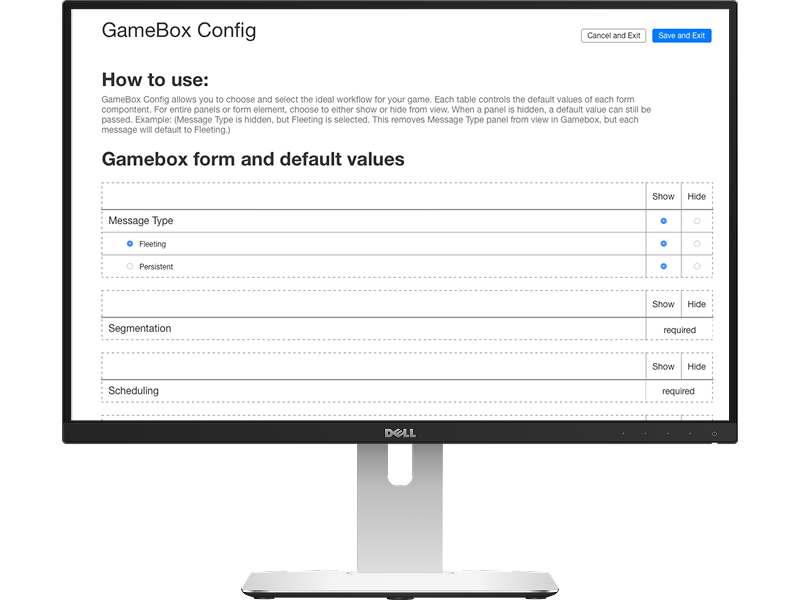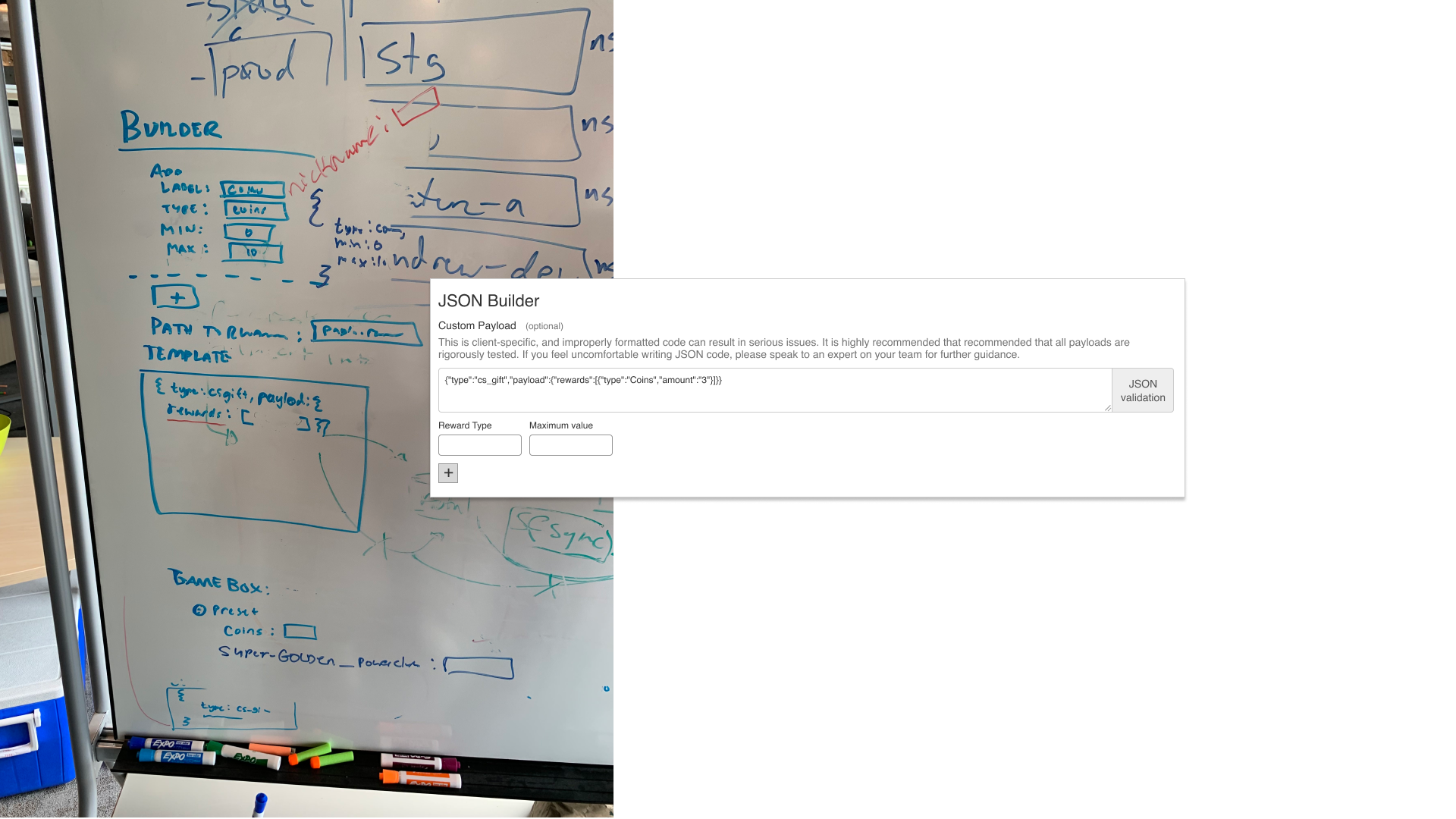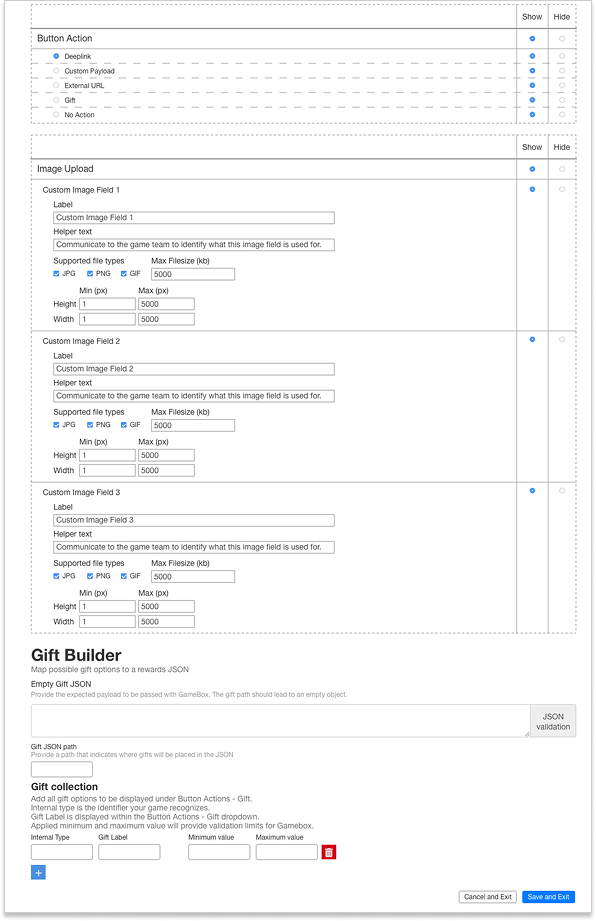Reducing Errors in Gamebox
GameBox Config Tool for Big Fish Games

My Role
UX Designer & Researcher
Team Compilation
Engineering and Product Manager
Duration
5 Months (End-to-End Design)
Overview
GameBox Config is a tool I designed to help internal game teams configure GameBox campaigns accurately and efficiently, eliminating the need for manual JSON code entry. This project increased tool adoption and significantly reduced errors in campaign creation, improving overall trust in the platform.
Problem & Goal
GameBox, an internal tool used by game teams, lacked error prevention and had a complex configuration process. This became evident when an incorrect JSON configuration caused an economic disruption within a game, leading to players receiving unlimited rewards.
Goal: Create a configuration tool that minimizes errors, simplifies the process for non-technical users, and increases adoption across game teams.

Design Process
User Research
I conducted in-depth interviews with 12 game teams across Big Fish Games to understand adoption barriers and usability challenges.
Key Insights
- Low Adoption: Only 4 of 12 teams actively used GameBox due to its complexity and risk of errors.
- JSON Confusion: Many Producers and Marketers relied on engineers to create JSON, leading to inefficiencies.
- Lack of Error Prevention: Teams hesitated to adopt GameBox due to the absence of input validation, which increased the risk of costly mistakes.
- Fragmented Workflows: Some teams developed unique workarounds, while shared marketing resources struggled with inconsistencies.
Iteration & Testing
Wireframing & Early
The first design iteration focused on reducing complexity by:
- Displaying only the necessary configuration options based on team needs.
- Adding input validation (e.g., file size limits, character counts).

Paper Prototype Testing Insights:
- Teams wanted to hide options but maintain default settings for future campaigns.
- Users preferred familiar grouping of input fields similar to the original GameBox UI.
These insights led to a simplified, intuitive interface that still preserved advanced customization.
Introducing the JSON Builder:
To eliminate JSON confusion, I proposed a JSON Gift Builder that allowed users to:
- Select rewards from a list instead of manually editing JSON.
- Use validation checks to prevent incorrect configurations.
- View real-time previews before submission.
Solution & Results
Final Design: GameBox Config Tool
The final design was a single-page application restricted to authorized users, ensuring secure campaign creation.
Key Features:
- Customization Options: Teams could configure fields based on their unique workflows.
- JSON Gift Builder: Eliminated manual JSON entry with an intuitive UI.
- Input Validation: Range checks, image size validation, and required field markers guided users in error-free setup.
Impact:
- Increased Adoption – GameBox usage grew from 4 to 8 teams, with 2 additional teams scheduled to onboard.
- Improved Efficiency – Marketers and Producers could now independently configure campaigns without engineer involvement.
- Stronger Trust – Teams reported greater confidence in using the tool, leading to more consistent usage.


Reflections & Future Improvements
What went well
- Eliminated reliance on third-party services, allowing teams to work independently.
- Improved cross-team collaboration by unifying workflows.
- User-centered approach ensured high adoption and trust in the final product.
What could be improved
- Better Onboarding & Documentation – A wiki or tooltip system would have been more effective than in-tool instructions.
- Deeper Exploration of Engineering Needs – Earlier engagement with engineers might have further streamlined development.
Conclusion
The GameBox Config Tool successfully reduced complexity, increased adoption, and empowered game teams to configure campaigns independently. By applying user-centered design principles, we transformed a high-risk, error-prone system into an intuitive, reliable tool.